|
Image: Pepe, Credit Brooks Coe Shea
By Hilda Joy Reprinted from December 2018 Abiquiu got to be a better place when Diana Coe moved here from Colorado. She quickly became an integral part of our community and was loved by all. Among Diana’s horses and donkeys was Pepe, a miniature donkey whose forebears originated on the Island of Sicily, off the coast of Italy. This breed of donkeys is known for its gentle disposition and for having a cross on the back of the animals. Pepe certainly was gentle and often gave rides to children on his cross-marked back at community events to which Diana took him and donated his services. “Pepe is a celebrity,” Diana would boast as she fondly scratched him behind the ears. Pepe immediately came to mind when fellow mayordomo Ray Trujillo and I learned that we were in charge of the annual Christmas posadas that started out each year in Abiquiu’s church, Santo Tomas el Apostol. We learned of our responsibility from our pastor, Father Joseph Vigil, just a few days before the first posadas, and the very first thing we did was to call on Diana, who happened to be home, to ask if we could have Pepe carry the young girl, who would portray the Blessed Mother in the procession before Mass. Diana thought it was fitting that this breed with the cross on its back would carry Mary, and she said, “Yes.” Our second step was to recruit young parishioner Christina Crim to portray Mary and to ask her to ask a fellow student to portray St. Joseph to accompany her during the procession. She did, but he was a no-show, so Christina’s mother Erma pressed into service another young man, Matteo Garcia, who asked, “Do I have any speaking lines?” The third step was to call a number of people and to ask them to bring food for the after-Mass potluck in the gym, which we quickly set up with tables covered with green cloth and red ribbon and pots of poinsettias that someone had donated to the church. Father was so thrilled when he learned that we would have a live donkey carry Mary that he asked us to have the procession go throughout the church plaza before evening Mass. The night of the first posadas, however, turned brutally cold with a strong bitter wind sweeping across the plaza. Father Joseph said that he did not want anyone to get ill and directed us to walk only a few feet from the library across from church. Diana parked Pepe’s trailer there, and, when he emerged from it, we could tell that he realized that something special was about to happen. He stood patiently and proudly as he awaited his passenger. When Christina got close to Pepe, she became frightened, saying, “I don’t do donkeys.” Her dad Allen stood on one side, and on the other side Ray picked her up and set her on Pepe, who immediately made Christina feel so much at ease that with a smile she said, “I can do this.” With silent St. Joseph at her side and with Diana leading and Ray following, the group processed to the front door of our church. Inside, the church was dark, lit only by the altar candles. St. Joseph knocked on the door, and the choir outside sang the traditional request for a room in the inn. Pepe cocked his head and looked at the choir and listened. Then the congregation inside sang its traditional denial. When Pepe heard the singing inside, he lunged toward the church door as if he wanted to enter. The choir outside and the congregation inside repeated the request/denial verses about a half-dozen times, and Pepe paid attention to each group, again lunging toward the door each time he heard the singing inside. Finally, the innkeeper opened the door, the congregation changed its tune to one of warm welcome, and the church lights and the Christmas-tree lights were turned on. Pepe immediately felt that he needed to be a part of this celebration and charged into church and headed toward the main aisle with Diana holding Pepe on one side and Ray securing Christina on the other side of the happy animal who then fell into a dignified gait as he headed to the front pew. Surprised congregants were saying, “Look. . .that is a real live donkey!” Father Joseph and I were the last to enter, and I said to him, “Father, this was not planned,” and he replied with a laugh: “It’s okay. It’s wonderful.” And it was. Amen. Another time, Diana brought Pepe to our parish’s annual Fiesta de Santa Rosa de Lima, which occurs every August, so that Pepe could provide rides for delighted children. Thank you, Pepe. Thank you, Diana. May you rest in peace with our heavenly Father. Hilda M. Joy April 2016 Posadas Afterword: My first Christmas season in Abiquiu, I attended my first posadas in Canones with Agustin and Merlinda Garcia and with Alfonso and Ninfa Martinez. It was a very cold, clear dark night, and the stars were enormous. After the church service, we were welcomed to a dinner of posole, which really took off the chill, and other posadas delights in the gaily decorated church hall. On the way home, Agustin asked, "So, Hilda, what did you think of your first posadas?" I replied that I thought it was all wonderful except for one thing---NO LIVE BURRO! He said they were hard to find, and I said that if ever I were responsible for a posadas, I would find one. In Pepe, I did.
3 Comments
A 2.5 Magnitude earthquake occurred on the Santa Fe National Forest in the Cuba District around 3:00 p.m. yesterday followed by a 3.5 magnitude around 4:45 p.m. If you are interested in learning more about the magnitude energy release, and other interesting facts about earthquakes from the USGS please visit the attached links:
https://www.usgs.gov/programs/earthquake-hazards/earthquake-facts-earthquake-fantasy The larger was Mag 3.5 (orange dot) and a smaller one of Mag 2.5 (yellow dot) in the afternoon of Wednesday, December 20th. Both were a little east of Cuba in the Nacimiento Mountains, just south of the San Pedro Wilderness area. Faults in this area trend SW to NE, so these earthquakes are likely connected, and more earthquakes might occur as stress and strain is released by these 2 quakes. This is ludicrous. I know it. The tree knows it. The woodland creatures know it. By Zach Hively When I was a younger man, I had a grand vision for my future: I would buy (or otherwise acquire) some land, and with this land I would grow a Christmas forest, planting a pine tree each year to create homes for woodland creatures until enough of them became my friends that I could dispense with human interaction altogether. I have grown and matured, though, and so has the vision. Namely, I am less certain that the forest is a Christmas one. I might more honestly call it a solstice forest. Or a Thanksgiving forest, since that is closer to when I buy the trees. Or a January forest, because that is when I plant them. Or, perhaps most accurately, I could call it a money pit. Regardless of cost, this is one dream coming true. I may not be a world-famous paleontologist ballplayer with a commercial pilot’s license (yet), but by Jiminy Christmas I have a forest. It is five feet tall, four trees large, and counting. Mostly it seems to be counting up. It almost counted down last year, when one of the trees developed an infestation of some kind--not the type of woodland creature I hoped to befriend—that made me abandon, with prejudice, my no-chemical kumbaya approach to winter forest management. This tree also had a comorbidity, a second infestation, that I could not identify despite my four years’ experience in forest stewardship. I showed a picture to a man at the nursery. “Looks like bird vomit,” he said. In hindsight, I question if he actually worked there. These are the difficulties that confound my annual tradition. You see, growing a magical EOY forest is less simple than picking up a tree from a lot and strapping it to the roof of any ol’ car. It is predicated on several factors, chief among them that picking up living trees is really, really hard. Living trees require dirt. Dirt is heavy. It is also notoriously difficult to strap to the roof. If we are perfectly frank—and why shouldn’t we be—half the reason I keep the registration current on my thirtysomething pickup is so that, once a year, I can drive it to my tree dealer, and he can direct two much younger men to hoist the tree into the bed, and I can drive it home where I unload it by my much older self. This is relatively easy to do; I have the advantage of gravity. The real trick is sliding this half-ton or so of wood and soil from three feet high to ground level without seriously injuring the tree, or myself, or my pride. If we are still perfectly frank—why stop now—this moment, usually taking place in dwindling daylight and encroaching cold, when I must navigate this living being and its dirt to the earth without the aid of an advanced pulley system, this is the moment I use to assess the state of my physical health. In short, it is my annual exam. When getting the piñon to the ground goes well, I am also doing well. When it is a struggle, or I throw out my back, or I wonder legitimately at any point if I will be spending the night pinned under a root ball, this motivates my exercise regimen for the next twelve months. I say this in earnest: other people train for beach bods or lower cholesterol. I look at a pull-up bar in May and think, “Better try to jump and touch that—I got a tree to unload this winter.” This is ludicrous. I know it. The tree knows it. The woodland creatures know it. But I can make myself think that I can indeed transform my body and my physical capabilities from one winter to the next. It sure seems much more plausible than transforming my body in a month, which is about how long I have to enjoy the tree, festooned with white twinkle lights outside my living room window, before I need to put it in the ground. This requires an even greater feat of strength than dragging the tree out of my pickup truck. Because I cannot get the tree back into the pickup truck, I have nothing but my wits and my muscles—mostly my wits—to walk the tree, all while battling friction and pine needles to my face, from my living room window to the Yuletide forest and the too-shallow hole I tried to dig after the ground had frozen.
Still, somehow, I have survived this odyssey every year, and so have the trees. We will more likely than not survive it this year, too. The forest will not be any taller, but it will be one tree bigger, and I will swell with pride every time I gaze upon it instead of doing a workout. In the spirit of frankness—in for a penny, in for a pound—I sure hope the birds don’t hurl on it. Zach’s Substack is free. The free stuff today will remain free tomorrow. Someday, he might offer additional stuff. Zach+, as it were. You can tell Zach that you value his work by pledging a future paid subscription to additional stuff. You won't be charged unless he enables payments, and he’ll give a heads-up beforehand. You can subscribe for free to Zach's Substack to receive weekly short writings -- classic Fool's Gold columns, new poems, and random musings. Republished from 12/2019 By Hilda Joy Christmas and cookies go together ofcourse. I have many happy memories of cookies sweetening this year-end holiday, but my favorite is of a woman with whom I worked who took Christmas cookie baking seriously. Every December 1, she bought 20 pounds of butter. Every day after work, she would make a light dinner and go to bed early. Then she would awake about two o’clock in the morning and bake a batch of cookies. These would be packed into candy boxes she collected throughout the year at the office, where we had a custom of celebrating our birthdays by buying two pounds of chocolates, passing them around after lunch, and then giving my friend the empty box. These boxes of cookies would be stashed in her freezer to be shared at Christmas, especially at her annual Christmas open house. In addition to all the Swedish recipes she learned early in life, she made Mexican besos (kisses) and a shortbread cookie so rich that she cut the dough into half-inch cubes, sprinkled with red and green sugars. Another woman, with the help of two of her friends, gathered all of her grandchildren into her large kitchen on a Saturday early in December for a full day of baking and decorating cookies while their parents had the day free for serious Christmas shopping. When their parents returned, each child offered them a tin of Christmas cookies. My all-time favorite Christmas cookie is my Mother’s unusual butter cookie, which is offered here for you to try. Please do and remember to leave some out for Santa Claus. EnJOY Christmas Eve in our Unger household always was scented by pine from the Christmas tree, furniture polish in the living room, the fishy smell of tuna salad (the only time in the year that this meal was served due to a meatless vigil), and the best smell of all---Christmas butter cookies. My Mother’s Christmas butter cookies are like no others due to their 1/4-inch thickness and primarily due to the inclusion of sieved hard-boiled egg yolks, which affect the texture and enhance the yellow color. The cookies should be golden yellow, not brown, so one must watch the baking carefully (my Mother would pull up a chair to the oven with its light on to watch color). This recipe was lost for many years until a happenstance long-distance phone call with our long-time next-door Illinois neighbor, Laverne, gratefully brought it to light. On Laverne’s recipe card, this recipe was attributed to another neighborhhood baker with whom my Mother shared it but who claimed it as her own. I still use my Mother’s five old Christmas cookie cutters; they are willed to my children, Lisa, Sheila, and Patrick, and to my granddaughters, Haley and Zoe.
Bringing fresh blood to old things. Zach Hively My dogsitter leaves me surprises every time I return home. A book to read. My dogs’ poker winnings. Streamers and empty wine boxes from the dogs’ wild parties (which reportedly keep him up too late). One time, he left me an axe. This axe was not a new axe. Its head was rusted over. The handle, washed-out gray. You couldn’t swing it without the head sliding four or six inches. It was perfect.
“Found it on a hike,” he wrote in the welcome-home note. Where? I asked. “The dogs swore me to secrecy,” he said. “Better ask them.” I figured this axe would make a perfect wall-hanging. It had that rustic feeling that city folks pay big big dollaz for. Plus, if my home ever stumbled into a slasher flick, the axe head would come flying off riiiight when the masked lunatic went to swing it at me, throwing him (or her!) off balance and giving me my window to pee myself. But I didn’t hang it, because of course I didn’t. I let it sit by my firewood rack all winter. Then I tucked it in the shed. Then I pulled it back out this fall. Was I ever going to do something with this? Or should I just toss it back into the desert for someone else to find? Because I had big projects that required a solid reason to procrastinate, I said, I’m a-gonna re-handle this axe. So I am. It’s not done yet, because it turns out that a distinct lack of woodworking tools and general axe-shafting knowledge is a detriment to successful (or even unsuccessful!) axe restoration. But I am falling in love—deeply, madly, Christmas-movie-level in love—with bringing new life to old things. This undoubtedly has nothing to do with the fact that I am careening toward forty and looking to make certain I am both relevant and useful. Nope. It might have something to do, however, with making something tangible with my hands. Hands that are increasingly knurled from using the wrong wood file and trying to open a dried-up bottle of wood glue. Could I buy a new handheld wood-splitter at the hardware store for under a hundred bucks? Absolutely. Am I likely to spend more than a hundred bucks on this project with a reasonable chance of ending up with a handle-shaped piece of kindling? For sure. Could I, though, grow as a human being, developing skills that bring me closer to my forebears who knapped their own flint and smelted their own iron and probably, at more than one point, cut off their own fingers? Perhaps. But my ancestors aren’t likely to get too close until they’re reasonably certain this antique axe head won’t come flying off the handle. Zach’s Substack is free. The free stuff today will remain free tomorrow. Someday, he might offer additional stuff. Zach+, as it were. You can tell Zach that you value his work by pledging a future paid subscription to additional stuff. You won't be charged unless he enables payments, and he’ll give a heads-up beforehand. You can subscribe for free to Zach's Substack to receive weekly short writings -- classic Fool's Gold columns, new poems, and random musings. By Tamra Testerman Image Courtesy of Andri Mae Romero Bode’s Mercantile and General Store, the Abiquiu landmark known for providing “service to travelers, hunters, pilgrims, stray artists and bandits since 1893” has (relatively) new owners at the helm. Established in 1890 as Grants Mercantile, Bode’s has always been more than a roadside store. It operated as a post office, stagecoach stop, and even a jail on the eastern end of the Old Spanish Trail, a historic trading route connecting New Mexico to Utah and Los Angeles. In the early 1900s, the Grant brothers sold the store to local ranchers, and by 1919, it was purchased by Martin Bode. This signaled the dawn of a new era for the store, and it has since transformed into a pivotal community hub and tourist attraction. Adding to the bodega charm and an eclectic inventory, the proximity to Abiquiu Lake makes Bode’s a destination for anglers and campers. And there is a small ‘grab-n-go’ kitchen famous for its breakfast burritos and green chile cheeseburgers. Hot coffee is always available as is a warm and friendly welcome. Throughout its long history, Bode’s General Store has not only been a place of commerce but also a cultural and social gathering place, embodying the spirit and evolution of the Abiquiu community—It is the oldest General Store In New Mexico.
I was employed with Bode’s for 6 years before my husband Andy and I purchased it. Hired as the assistant general manager, then being the general manager the three years before the purchase. I have always been in management and worked in retail. My husband worked and still works at the Los Alamos National Laboratory.
What inspired you to take the reins and how did you prepare for this role? Dennis and Constance Liddy were ready to retire. They offered Bode’s to Andy and me, and we accepted. I had already been running day-to-day operations, so the only thing was to get Andy up to speed when we took over. I worked with the crew for 6 years; we offered them their same positions, and they all stayed! How do you see Bode’s role in the Abiquiu community, and how do you plan to enhance that? I was born and raised in Abiquiu, so this is my home. My family and I have been part of the community for many generations. My husband grew up in Chimayo, which is about 30 minutes away. Supporting the Abiquiu community is important to us, so we employ many locals and choose local options for dining and gift certificates. Both churches receive donations from us for their events. We donate for as many events as possible for Abiquiu Elementary, even if it’s just school supplies, and we have donated to the Monastery and Ghost Ranch. Even Santa appeared at Bodes, in a free event we host for the community. We will continue supporting our community and do more if needed, which brings happiness to our hearts! Can you share a challenge you’ve faced since taking over and how you addressed it? Being short staffed – And the only way we can address it is by both my husband and I working long hours to cover shifts. We have some outstanding employees that help in covering shifts as well. In what ways do your personal values and approach influence the store’s atmosphere and customer experience? Great customer service is important to me. And safety for our staff. To me, this goes hand in hand.—Having great customer service, happy employees and great music all contribute to a great store atmosphere! What are some unique aspects of managing a general store in a place like Abiquiu that might differ from other locations? Living so far away from a town I have learned there may be a need for items when other big chain stores are closed, or in an emergency.—So we 1stock a good mix of items. From plumbing, to feed for animals, to grocery produce (organic as well.) And just having a great variety of munchies for when our school buses stop for a visit. How do you balance respecting the store’s history and traditions while implementing new ideas or changes? We have great respect for Bode’s. I love seeing the older pictures from the way I remember it as a little girl. Updates happen, so of course we will adjust what needs to be modernized—but we have no plans to change anything. What are your long-term goals? Just keep doing what we are doing! What is the most rewarding part of running Bode’s General Store? Getting to see everyone that visits us. From our daily customers to new faces just making a pit stop—And being able to donate the way we have. You can find Bode's General Store at 21196 US 84 in Abiquiú. Who has time for reunions between filling out medical questionnaires? By Zach Hively So my high school graduating class (go Mascots!) just held its twenty-year reunion. This struck me as odd because 2003 was in no way 20 years ago. In that much time, you would expect the world to evolve, people to grow, something—anything at all!—to feel different. I mean, something besides smartphones spreading like viruses and viruses spreading like smartphones and AI surpassing, by all meaningful measures, the capacity of even the most advanced Speak & Spell. To be sure, some things really have changed. Here’s an example: In high school, I never got invited to any of the parties I heard about. Now that we’ve all grown up and had the chance to mature, I don’t even hear about the parties in the first place.
I welcome this development. I had all the time in the world in high school, so if I had been invited to the parties, I would have had unlimited bandwidth for making myself sick with preemptive social anxiety before ultimately talking myself out of going at the last minute and staying home to finish my book instead. Now, I don’t have time or energy for that kind of emotional horseplay, let alone for finishing books. I am a Busy Adult who has recently discovered how gripping Instagram Reels can be when I should be sleeping. So even if I had been invited to the reunion, I would have ignored the message altogether until inevitably running into a classmate at the grocery store while visiting my folks for Christmas, at which point I’d have to pretend I changed my number and lost my contacts so let’s text each other right now okay great I’ll see you at the twenty-fifth reunion and then I would promptly have to drop my phone in the grocery store garbage can and buy myself a burner, probably a flip phone, and start a new life in another state or even better a Central American nation. Or, I could tell the truth. This would likely be “Sorry I missed the reunion, which I only learned about after the fact on a Reel. But I had a urology appointment that day anyway.” This is the reality about realizing childhood ended long enough ago that today’s children are dressing in your old clothes for Decades Day at school: Your body is changing. But unlike the fun times of puberty, no one has the awkward conversation with you about what to do when you find a weird lump, or that mole on your back extends like a pencil eraser, or you get sore from doing the dishes. And making appointments for this stuff takes up all—and I mean all—of your free time. Then, whatever time you don’t have left is spent filling out the same extensive questionnaire in the waiting room that you already filled out online for the Expedited Pre-Check-In, and which you filled out the last time you were in to discuss the changes in your otherwise flawless urinary history. I’m trying to embrace being such a Busy Adult and doing the Right Thing by going to the doctor for all these concerns before they become even bigger concerns, like the Stay-Puft Marshmallow Man from Ghostbusters, which as a side note came out closer in time to my high school graduation than my graduation is to today. What I find is that, by and large, falling apart is not what those in the medical profession call “anything to worry about.” I spend hours and hours of my precious not-so-youth sitting on hold to book appointments, and deleting reminder texts, and actually remembering to go to the appointments, and how am I rewarded? I’m not. I don’t even get a piece of candy, unless I book for the week before Halloween. Nor do I get a diagnosis. I get some concerned grunts, if I’m very lucky, then the doctor puts her stethoscope around her neck and says, “Everything seems perfectly normal for a man your age. That lump should resolve itself. Get up from that computer more, even though that’s how you earn the money to pay for these appointments. And remember to floss! You can schedule a follow-up with Debra at the front.” Which I do, because the lump still hurts and I don’t believe it will “resolve itself.” Medical appointments are in scarce supply these days, so it’s better to have it and not need it than need it and have to trade a kidney for it and book the requisite kidney specialist on top of everything else. Plus, I am a Busy Adult, and it’s helpful to have these things on the calendar—preferably in five-year intervals, in hopes of getting out of another reunion that day. That’s a wrap! This Fool’s Gold is public, so feel free to share it with your friends and enemies You can subscribe for free to Zach's Substack to receive weekly short writings -- classic Fool's Gold columns, new poems, and random musings. By Jessica Rath What are the odds that two people who were born and grew up in Germany and who ran into each other a few times in Munich during the late 60’s counterculture movement would meet some thirty years later in a tiny village in Northern New Mexico? Pretty slim, wouldn’t you say. And yet, that’s exactly what happened to me and Renata Zimmermann. I had moved to Abiquiú from Berkeley/California in the fall of 2000, and when I got to know my neighbors a little, everybody asked: “Have you met Renata yet? She knits these amazing sweaters. And she is from Germany, as you are!” Hmmm. I wasn’t really all that interested in meeting other Germans; I had left the country for good in 1973 with no intention to ever move back. But when I was finally introduced to her – a kind neighbor had invited me to a Thanksgiving Party – both of us were thunderstruck. We had actually met in Munich! We knew many of the same people! Since then we’ve become good friends and I learned enough about Renata’s life to decide to write about her adventures. She was born and grew up in Bavaria, Germany’s most southern state. She trained to be a dressmaker and moved to Munich, the hub for intellectuals, radicals, and artists. It so happened that a German avant garde filmmaker, Michael Verhoeven, made a movie in the flat below the one where she lived, which started her career as a wardrobe and costume maker. She worked for and with people who later became famous, such as Wim Wenders, Mel Ferrer, and Dennis Hopper. I also knew Wim Wenders at that time, not so much because of his movies (he was a student at the Munich Film School), but because he was part of the political anti-establishment, anti-Vietnam war movement, as I was. We were all hanging out in the same coffee shops and pubs in Schwabing, Munich’s famous bohemian district frequented by artists and students ever since the 1900s. I left Munich at the end of 1970 and never heard of or saw Renanta again until we met in Abiquiú, just about 30 years later. That’s when I learned that she not only made costumes, but also starred in some movies: “The Sweethearts” for example, about four girls who like to sing and then start a band. The director was Klaus Lemke, and it opened in 1977. Renate told me that the band really existed, and they performed in Frankfurt and other cities – just for fun! “They don’t sing beautifully, but are successful” states a newspaper critic. The Internet Movie Database (IMDb) has several entries about Renata: as actress, costume designer, and wardrobe maker. But at some point she had enough of all this. When did she leave Munich and Germany, and why? I recently gave her a call to find out more. “Everything exciting seemed to come from the United States at that time”, Renata told me. “I loved Bob Dylan’s songs, I met Dennis Hopper, but I never learned English at school and couldn’t understand anything. I wanted to understand Dylan’s lyrics! As long as I can remember, I was impressed with American culture; I longed to get to know it better.” What a unique motivation! “I left Munich in 1981”, she went on. She had to vacate the flat where she lived because the owners needed it for themselves, and the Munich housing market was always difficult, even then. So she decided to visit a friend in New York City, a German journalist who had relocated to the United States a year earlier. Renata used the time there to research whether she could find a place to live and support herself, and once that was settled she returned to Munich and sold everything she owned, except for her records, a feather bed, and her books. Then she left Germany to live in the United States, unfamiliar with the language, without a safety net. That’s quite courageous, don’t you agree? For about one and a half years she rented a room with a woman in Uptown New York. That’s when she started knitting: she bought a knitting machine, taught herself how to use it, came up with unique designs, and sold her creations. “I met this Danish woman who had just opened a store for knitted items in Sag Harbor on Long Island. I went to the opening reception, and I liked it there so much that I decided to move to the Hamptons.” And a little later she had her own store which she called “ZIRE” – for Renata Zimmermann. A few years later the Hamptons became ever more popular as a getaway for people from New York City. Movie celebrities and other rich and famous folk bought summer residences along the Atlantic Ocean beaches. Rents skyrocketed, and Renata was looking for a more affordable site. A friend told her about Santa Fe – how stunningly beautiful it is there. And it would be perfect for her knitwear; the city was known for high-quality art and attracted a steady flow of tourists. After her second visit she decided to move to Santa Fe – that was in 1986. With a streak of luck, she was able to rent the Gustave Baumann house on the east side of town. It was within walking distance to the Plaza – that was important, because Renata didn’t have a car yet. She went everywhere by bicycle. Several stores and galleries carried her work, and everything went well for a year. When her landlady took her along to participate in a section of the Hands Across America event (planned to raise awareness and money for homeless and poor Americans) along Interstate 40, she met many of the people she’s still friends with today, including her future boyfriend who lived in Medanales. In 1987 she moved in with him. A bicycle wasn’t sufficient any more, and she learned how to drive a car and got a driver’s license. In 1992 some land was for sale further up on the mesa, and Renate bought some property – for $1,500/acre. Soon after she started to build her house; it took six or seven months to finish. And that’s where she still lives. After many moves she found her ideal place, the one she loves. The pristine, natural setting all around her has inspired her creations which easily found buyers. For many years, Renata drove to art fairs all over the country – from California to Florida and almost every state in between. And she is part of the Abiquiú Studio Tour, she joined just a few years after it started.
Nowadays she doesn’t drive to art fairs any more, but she sells her wearable art at several stores and galleries in northern New Mexico, and she still participates in a few studio tours. I think if one would ask her how to become a successful entrepreneur she’d say “Find out what you love to do, and then DO it”. Sound advice, especially if one is gifted with talents for creative design and for matching colors and patterns in a unique way, as she is. By Hilda Joy
Republished October 20, 2010 — “What did you bake in the horno the day it was blessed?” asked several friends who could not make it to the first-firing fiesta. Well. . . nothing that day as the fire must burn for several hours. The first horno baking day took place a dozen days after the horno was blessed and fired. Early in the morning, I was able to get the horno fire going with just one match. Friends started trickling in. Dexter noticed that the horno had developed a long narrow crack and quickly repaired it with clay left over from the building process. I decided then to keep a bucket of clay on hand to mud inevitable future cracks. Back indoors, my kitchen was busy with vast amounts of bizcochito dough being formed. Soon a bake-off ensued between friends Analinda and Dexter, considered by many to be Abiquiu’s premier bizcochito baker, whose generously sized recipe yields more than 18 dozen cookies! Linda’s more modestly sized recipe produced great-tasting results as did Dexter’s. Though the ingredients of the two recipes varied, both resulted in the unmistakable bizcochito texture and taste so beloved here in northern New Mexico. Later, unable to decide which was “better,” we declared the bake-off a draw. Instead of using wool to gauge the horno’s heat, we stuck a 21st-century oven thermometer into the middle of the horno and discovered that the heat had reached more than 600 degrees F., which informed us that the horno only needs two hours of firing time, thus saving on fuel provided by precious and sweet-smelling cedar. After letting the fire cool down a bit, we put in the cookies and sealed the horno opening and smoke hole with the heavy door and plug fashioned by friend Bonifacio. Analinda made three loaves of bread following a las Golondrinas recipe she had learned while serving as a docent there with husband Napoleon. I was so busy running around that I forgot to punch down my bread dough, so the second rising was shorter than it should have been and the bread suffered a bit. Friend Dawn made a delicious non-yeasted cornbread with green chile. While two chickens were roasting indoors, life-long friend and great cook Jean, visiting from Illinois, steamed broccoli and made mashed potatoes and gravy for our early-afternoon repast. When the six loaves of bread came out of the horno, they were placed on a large wooden board in the center of the dining-room table. After the morning’s work, we were ready for food, especially for the horno bread, which we slathered with lots of buter—so totally unnecessary but so unbelievably delicious. Before the meal ended, we decided that the next firing would find us making pizza, which we surmised would develop a great crust in a 600-degree F. horno. Many do-it-yourself pizzas have been subsequently baked in this “most beautiful horno in northern New Mexico” as many people have described it. Bakers included students on a field trip who were taught about horno building by Dexter while their foil-covered inside-out apples were roasting. They enjoyed this dessert first while assembling their pizzas. By Sara Wright
“What you make from a tree should be just as miraculous as what you cut down”. Richard Powers November is the month of endings and beginnings - I am keenly aware of all trees as they prepare for winter sleep, and this is the season during which I begin to celebrate evergreens. Most deciduous trees are a tangle of sleepy gray branches, but the conifers are still breathing life. Herein lies the Deep Forest Green Religion of Hope. Many trees, both thin barked deciduous trees and conifers are still photosynthesizing. I love gazing into the woods beyond my brook lush with balsam, fir and hemlock knowing that the animals and birds that are left will soon be nestled in thick undercover finding nourishment and protection from winter winds and snow. In Indigenous traditions throughout the world when the Winter Dances begin the evergreen bough is central to Ceremony… I follow this tradition by tipping boughs for a wreath that will cleanse the air in my house even as it scents the room with sweet fir and balsam. Beginning each November, I not only honor every evergreen left on this planet, but I mourn the senseless slaughter of so many trees for anthropogenic consumption. Buy and decorate the tree and then throw it out the back door a week later - a recent barbaric ‘ tradition’ if there ever was one. Why is it that we have to murder a tree to celebrate the season of ‘love’? Why not er on the side of life? We could have our children plant a tree for Christmas - light and decorate the boughs, and celebrate the wonder of what a tree can do - eat light, create breathable air, - purify the waters, I could on here - a LIVING tree is a miracle – it’s worth repeating: Why not celebrate Life - not Death with your children? Recently, I posted this quote and query on FB. I am not much of a fan of social media, but I do participate with photographs when I feel the need to share natural beauty, when I need to challenge perspectives, or in this case to highlight destructive traditions that harm our trees. Forests are fundamental to the health of the Earth. I wonder how many people realize that this recent European tradition (1600’s) along with the invention of ‘Santa Claws’ has its origins in the ancient Indigenous past when evergreens were seen as holy beings central to Winter Ceremonies? Indigenous peoples throughout the world still honor the evergreen – a symbol of the Tree of Life – by asking permission from the trees and then gathering boughs for the dances that go on all winter. When living in New Mexico I was privileged to attend many Pueblo ceremonies that allowed me to celebrate the life of trees in a way that was so familiar and meaningful to me… Here at home, each November I ask permission, gather boughs, then create my wreaths to celebrate the season with a thankful heart. One that is predicated on living trees… I can’t fathom how we strayed from a practice of gathering tree boughs to celebrate ‘everlasting life’ to one in which we KILL trees, drag them in our houses for a week or so and then throw them in the garbage. Perhaps we have not realized that destructive traditions can be broken? Maybe we can’t fathom that a tree is a living being? Or perhaps we just don’t care. Traditions are created by humans and are not cast in stone. Why not return to the Original Story of celebrating life with living trees at christmastide/winter solstice or any of the other seasonal celebrations? I live in a log house, so I am always aware that trees continue to create a shelter for me, my animals, my bird, my plants. I have wooden shades and sit on beautiful wooden furniture that once belonged to my grandmother, listen to an exquisitely crafted wooden grandmother’s clock that chimes every 15 minutes. I cut my vegetables on a wooden cutting board, use paper towels, toilet paper, newspapers and logs to light my fires… I could go on and on here. I am never out of touch with the gifts that trees have given me, trees who ask for nothing in return except my gratitude. I have also spent the best part of 40 years planting both conifers and deciduous trees on this patch of land that I call home. I have felt the deep satisfaction of watching fruit trees produce berries and other fruits by the hundreds if not thousands, peered at the oak who produced acorns for the first time this year, marveled at the many young oaks the jays and squirrels have planted. I watch recently planted young cedars, once decimated by the deer, thrive under winter caps made of chicken wire. Just two years ago I planted two balsam seedlings to provide better winter cover for my winter birds near the house. I am getting old now and will not live long enough see many of these new seedlings grow into adulthood, but I continue to plant more trees just the same, knowing that I am participating in the Great Round of Life. And this is all that matters. Someday my ashes will find home under a forested tree next to flowing waters. In my mind I imagine children gathering with their parents to prepare the earth to receive evergreen trees during this month. Then in December I watch the children decorate and festoon these Living Beings with Light. Loving parents and grandparents use this opportunity to teach the children about the complex lives of trees and their critical roles in our lives, while modeling the importance of cultivating gratitude for their existence. Isn’t this a scenario worth pondering? Postscript: From an economic perspective it is just as practical to sell living trees as those that will soon end up dead. |
Submit your ideas for local feature articles
Profiles Gardening Recipes Observations Birding Essays Hiking AuthorsYou! Archives
October 2025
Categories
All
|

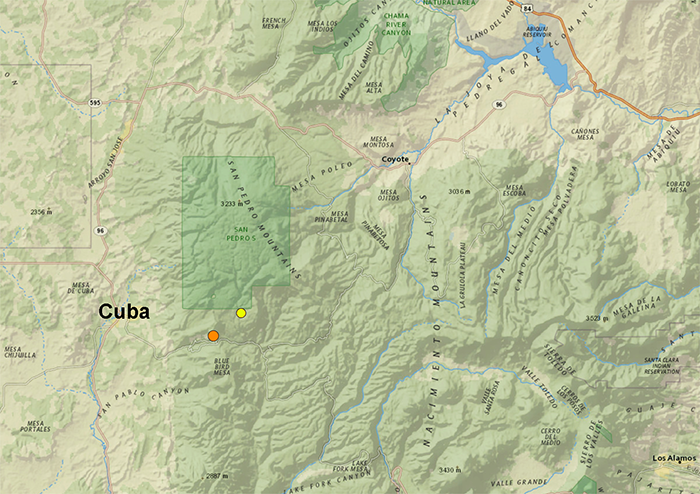
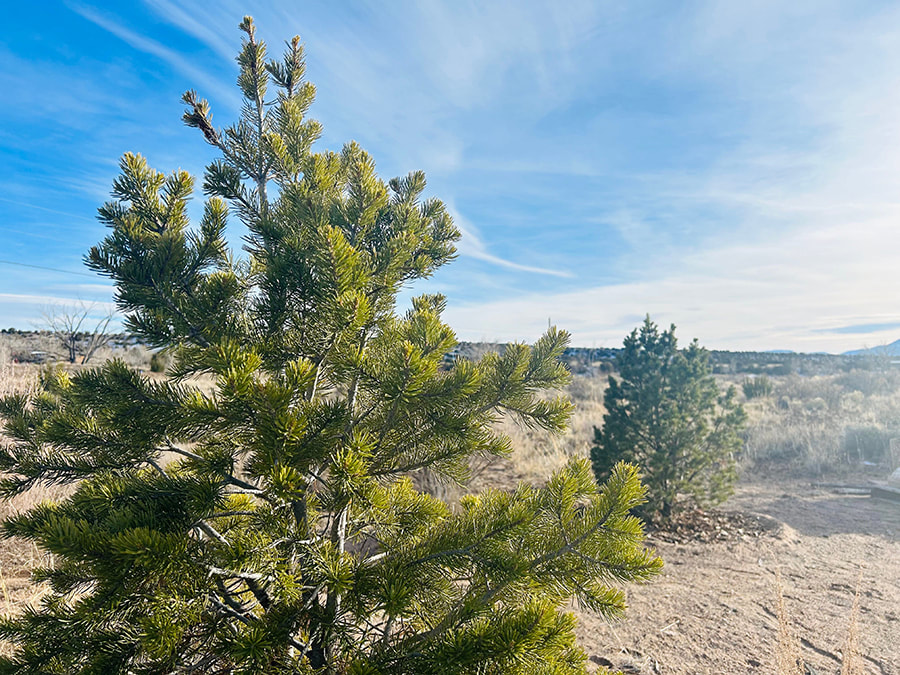
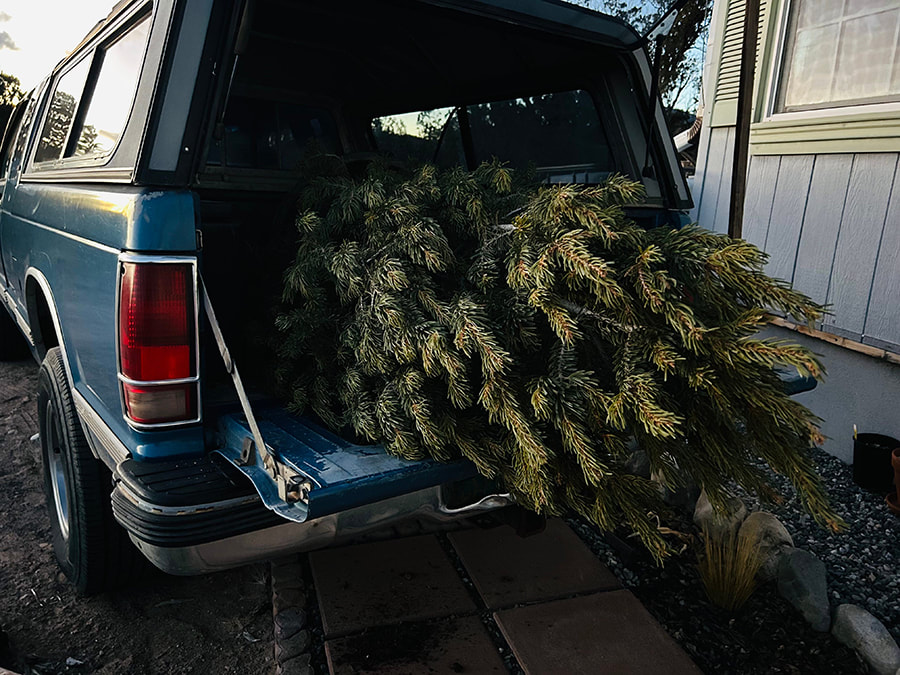
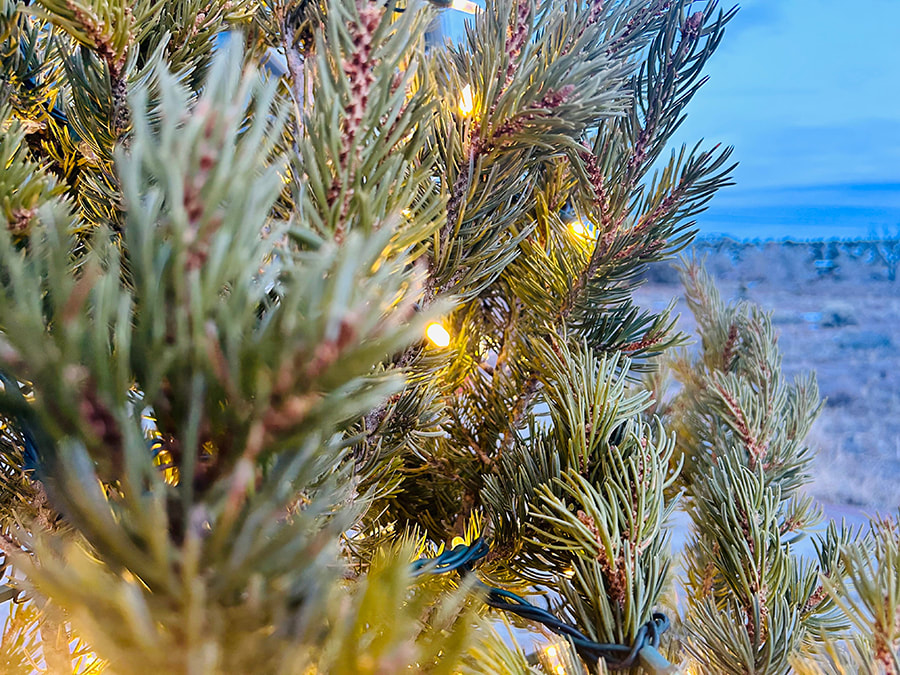











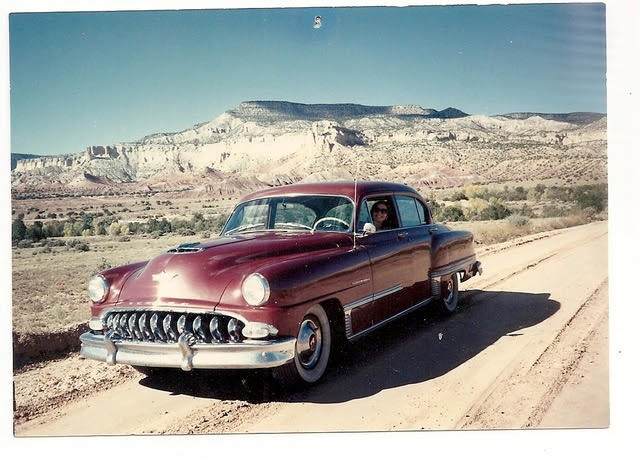



 RSS Feed
RSS Feed